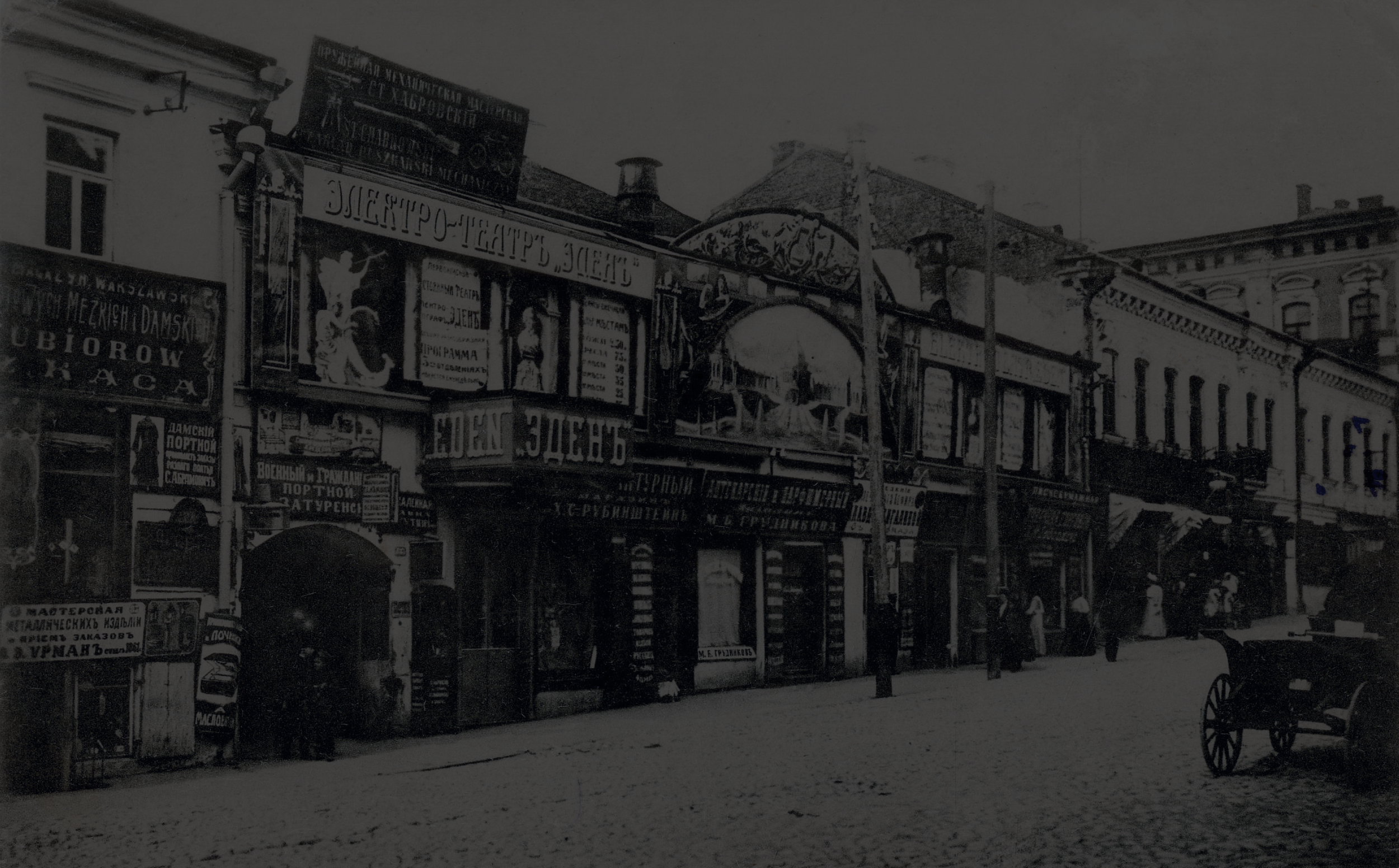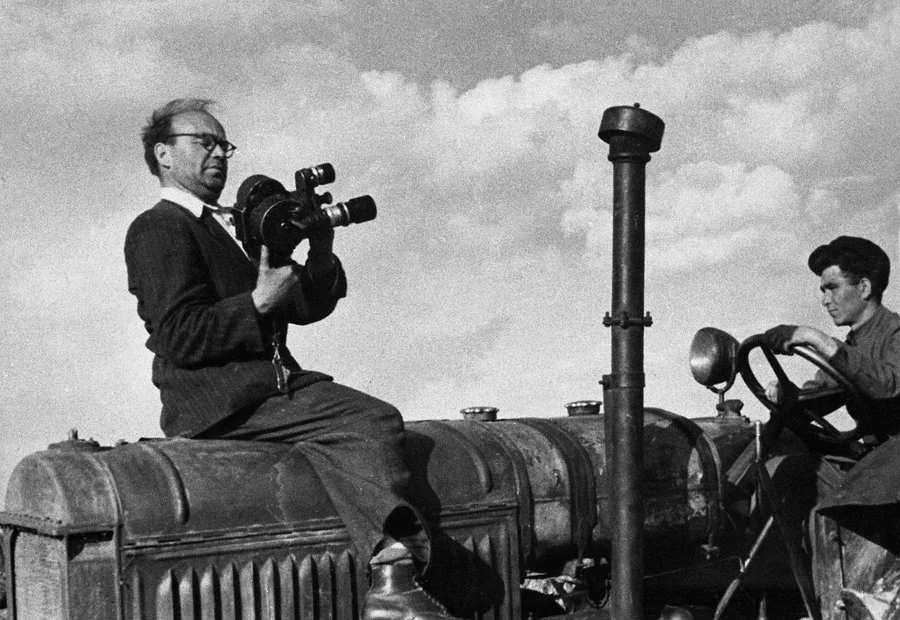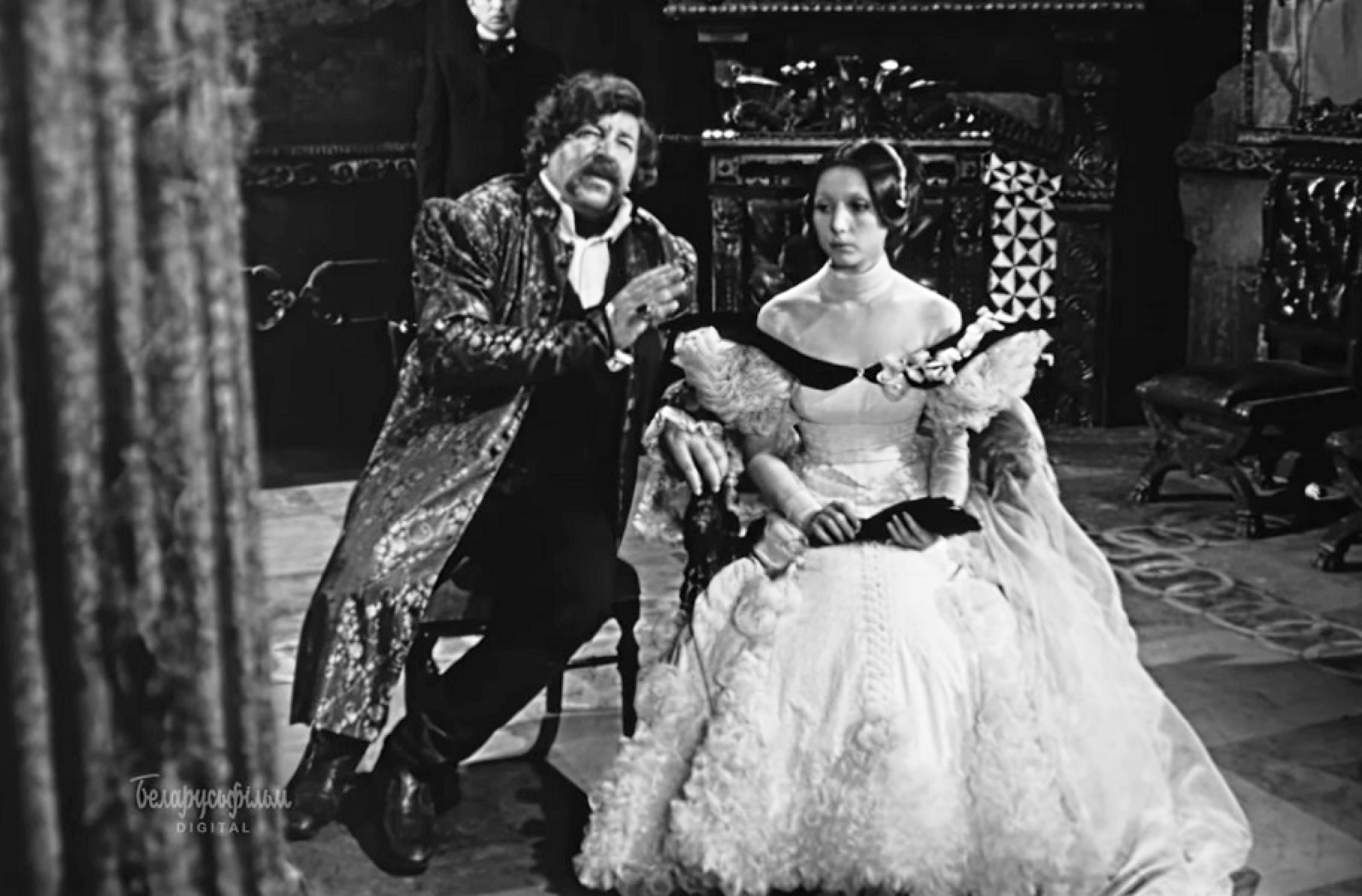Belarusian Film Forever
100 years
since the birth of Belgoskino
98 years
since the first Belgoskino film
We support Belarusian culture as it expresses itself in film. We believe life in Belarus is a source of inspiration, not a limitation. Culture may come from the land but is not bound by it. We know that Belarusians carry their country in their hearts, wherever they are.
The connections between Belarusians and cinema stretch back almost to the beginning of moving pictures themselves. The long and deep connections to the movies began well before the borders of modern state of Belarus were drawn.
At first, in 1898, it was just the chance to watch “the flickers” in a makeshift auditorium. 10 years later, the first Belarusian made films arrived. At first, not suprisingly, they were only “actualities” or documentaries, such as the film about an excavator, the Infernal Machine Behind the Brest Railroad Station.
Cameraman M. Berov during the filming stories for the newsreel “Soviet Belarus”
Source: https://www.sb.by/articles/kult-kino.html
The Return of Nathan Becker. 1932
Source: https://www.kino-teatr.ru/kino/movie/sov/8314/foto/a17037/451845/
Belgoskino, founded in 1924, had a mission to tell the story of Belarusians on film. It did, starting with Forest Story, released in December 1926. But it had other goals, too. It had to make money, which it did with “All-Union” films. And of course, it always had to deliver the messages of the Communist Party, even as they may have changed from one year to the next.
Because Belarus had been the heart of the pale of settlement, many Belarusian stories involved the area’s Jewish population. The Belgoskino film, The Return of Nathan Becker, stands out as the only sound film ever produced in the Soviet Union in which there is a Yiddish version as well as a Russian one.
Politics caused great upheaval in the Soviet film industry in the 1920s and 1930s, we will give you some insight into that story.
After “The Great Patriotic War” ended in 1945, Belgoskino became Belarusfilm, and soon became known for its movies about the war. Perhaps the best known is the bloody, violent, and gut wrenching, Come and See. But it also made the fantastical King Stach’s Wild Hunt.
After the fall of the Soviet Union, when the Republic of Belarus arrived, so did scary Belarusian movies, a.k.a., “Potato Horror.”
While we may occasionally bring you a film synopsis, we will not review them unless looking at the final product can bring us new insights.
We hope to show you how history and filmmaking in Belarus interacted, and how as Belarus changed, so did the films.
On the set of a film “Forest Story”. 1926
Source: https://1prof.by/news/stil-zhizni/svinopas-ili-lesnaya-byl-kak-sozdavalsya-pervyj-film-belorusskogo-kinematografa/
King Stakh's Wild Hunt. 1979
Source: https://telegraf.news/showbiz/kino/belarusfilm-vylozhil-otrestavrirovannyj-film-dikaya-ohota-korolya-staha/

Who we are?
Egor Konev
The son of screenwriter and writer Fiodor Konev. Author of scripts for 9 produced documentary films. Co-author of the screenplay for the feature film 'Polesian Robinsons, or the Wonder Island' (2012). Has 30 years of experience in journalism and research.
Fred Stern
A former United States Foreign Service Officer who spent three years in Minsk, Fred brings love for film and research skills to the project.
Special thanks to:
Ivan Kukushkin for helping us get off the ground.
The Fairfax County Public Library, Fairfax Virginia, especially to the Kingstowne Branch and the Inter-Library Loan Department.
We could not have done it without you.
Support your local library!






